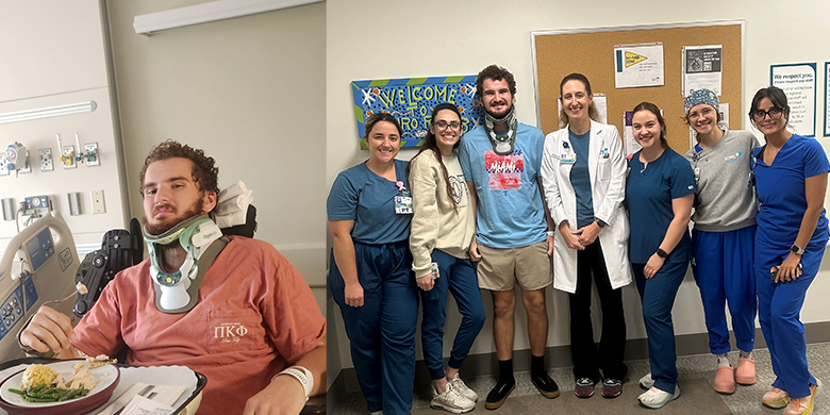Know the facts to prevent skin cancer
- Category: Skin Care
- Posted on:

The weather is heating up, and the outdoors are calling. Whether you’re headed outside for an afternoon stroll or to enjoy a neighborhood barbecue, you’ll want to brush up on your sun and skin cancer facts first.
Like, did you know that skin cancer is the most common type of cancer? And that nearly one in five Americans will develop it? Unfortunately, there are many misconceptions about what causes skin cancer and how to prevent it.
Read on for answers to common questions about suntans, sunburns, skin cancer, and sun protection.
What are the signs of skin cancer?
There are three main types of skin cancer. Basal cell and squamous cell carcinoma are the most common types. But the deadliest form of skin cancer is melanoma. Early detection and treatment are very important for any skin cancer.
The best way to detect signs of skin cancer is to perform a self-exam of your skin on a regular basis. During an exam, look for changes to the skin, specifically skin marks or moles. Use the ABCDE acronym to help you remember:
- Asymmetry: One half does not match the other half.
- Border: The edges of the mole are ragged or irregular.
- Color: The mole has different colors in different areas. You may see shades of tan, brown, black, red, or other colors. You also may notice a lack of color in some areas.
- Diameter: Melanomas are usually larger than 6 mm (the size of a pencil eraser) when diagnosed, but they can be smaller.
- Evolving: A mole or skin lesion that changes in size, shape, or color.
Other signs of skin cancer may include:
- A mole or skin mark that itches or is sore.
- A mole or skin mark that oozes, bleeds, or becomes crusty.
- A mole or skin mark that looks different from your other moles or skin marks.
- A sore that doesn't heal.
- A mole or sore that becomes red or swells at its edges or beyond.
Is a suntan good for my skin?
A lot of people think that tanning is good for your skin, and that a “base tan” or “healthy glow” will prevent sunburns. In reality, tanning increases your risk of skin cancer and doesn’t actually prevent burning.
A suntan is the skin’s response to UV exposure, which it experiences as an injury. Normally, to protect your skin from UV damage, your body makes melanin every day. Melanin is the pigment that gives color to your skin and eyes. When the sun’s rays damage your skin, the body makes more melanin to try to protect your skin from further damage. This process causes the skin to change color—to darken or burn.
Overexposure to UV light, both natural and artificial from a tanning bed, not only increases your risk for skin cancer but also changes the skin’s texture with wrinkles and age spots. Basically, every time you tan, you damage the skin. And this damage accumulates over time.
There’s no safe way to tan. Tanning beds are just as bad, if not worse, for damaging the skin compared to the sun. If you prefer a tanned look, you may want to opt for a self-tanning lotion, foam, or spray instead.
Can you get a sunburn on a cloudy day?
Cloudy, cold, winter, or fall—whatever the season, you can still get a sunburn. There are two different kinds of UV radiation that come from the sun. Both UVA (aging rays) and UVB (burning rays) can damage the skin and increase your chance of developing skin cancer. These rays are present even when the sun is hidden behind cloudy and overcast skies.
It’s important to protect yourself from sunburns. One or more blistering sunburns as a child or teen, along with sunburns as an adult, increases your risk of skin cancer. So, just because the sun is hiding doesn’t mean its rays won’t affect your skin.
What can protect me from the sun?
Sun safety doesn’t mean you have to stay inside. There are plenty of ways to protect your skin. A big one is applying sunscreen. Remember to:
- Wear water-resistant, broad-spectrum sunscreen with a sun protection factor (SPF) of 30 or higher.
- Apply sunscreen to all exposed skin at least 20 minutes before you go outside.
- Reapply sunscreen at least every two hours while outside, and more often if you’re swimming or sweating (which is likely during our New Orleans summers).
Find other ways to prevent skin damage.
How do I get more vitamin D?
Vitamin D is an important nutrient you can get from the sun or your diet. It benefits your immune system and bone health, and is especially important for babies, children, and teens.
So, how do you get vitamin D from the sun, while also staying safe in the sun? Most adults can meet recommended vitamin D needs by exposing their face, hands, arms, or back to the sun for 10–15 minutes at least two times a week. This limited sun exposure provides vitamin D without overdoing it in the sun’s rays.
You can also get vitamin D from your diet. These foods contain vitamin D:
- Canned tuna
- Cod liver oil
- Egg yolks
- Fortified foods, such as milk, orange juice, and some cereals or oatmeal
- Liver
- Mushrooms
- Oily fish, such as sardines, herring, and mackerel
- Salmon
Skin cancer care if you need it
Knowing the facts about the sun can help you enjoy your time outside and lower your risk of skin cancer. If you do get skin cancer, know that you’re not alone. Oncologists at LCMC Health are ready to find the best treatment for you. Learn about specialty skin cancer care near you.
